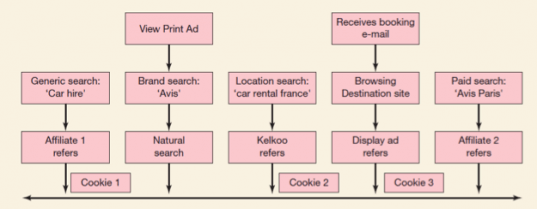My experiences of using attribution as a social media marketer
Attribution modelling has certainly been a hot topic in 2011 and many brands have started to reap the rewards of optimising their online marketing budgets and reallocating marketing resources using it. Additionally, it can also provide incredible insight into customer behaviour and the touch points that they come into contact with up to and including the point of conversion.
To get an idea of the types of benefits brands can experience take a look at this post on the Econsultancy blog and see Dave's post giving this introduction to attribution modelling options.
Attribution modelling and social media
I’ve heard a lot recently about how the time of experimenting with social media without true measurement is coming to an end. And let’s hope that’s the case. Whilst attribution modelling certainly isn’t a panacea, using it does allow marketers to start to understand customers’ behaviour and how engagement and interaction takes place within a brand’s online communities and for their content on the way to the buying of products and services. If you just look at the last click model, as with this recent data it may suggest social media marketing is contributing very little.
Options for attribution models
As Dave's post on attribution options shows, there are a lot of different models being used and discussed and a variety of ways to interpret the results. What we want to do is to attribute sale or lead to those referrers that contributed most on the path to purchase. In this example, simply attributing to the last referrer - the last click model and the default in many analytics systems is inaccurate.

The approaches we have used
For one of the brands I work on we’ve broken down the touch points in the path to conversion into three categories; the introducer channel (channels that appear in the first 25% of the path), the influencer channel (channels that appear in the middle 50%) and the closer channel (channels that appear in the final 25%).
To give an example of how this might work, there may be 4 touch points or channels in any given converted path. Let’s say that the revenue generated from the sale is £1000. Using a linear model each channel would be attributed £250 of the sale and if, for example, a facebook page was touch point 2 or 3 (middle 50%) of the path, it would be considered an influencing channel in this conversion.
Analysis of our data over the last few months reveals that, for the paths that include a social media touch point, our social media activity plays the role of influencing channel more than 50% of the time. It’s the introducer 35% of the time and closer around 15% of the time.
What do these results tell us?
There’s a lot of insight that can come from studying the data but perhaps the most apparent is that social media, for our travel brands at least, has a role to play in each of the three stages of attribution. It introduces people to the brand, driving awareness and sparking an initial interest. The majority of the time it’s an influential channel helping to convince our would-be-customers that we’re the right brand to buy from. And finally, it’s also helping to convert customers, even though this is the smallest of the three elements, it still plays a role.
Last click attribution
It also tells us that the last click attribution model used by many brands is, as our data suggests, greatly under valuing the performance and impact that social media has had, and is having, on brand performance. It’s worth stressing that a large majority (around 85%) of our social media touch points take place in the first 75% of the path activity.
How can we best apply attribution models?
Simply put, attribution now means marketers can place a value on social media activity and can start to build an ROI figure alongside other digital marketing channels. Of course for most brands social media will provide far more value than assisted sales (think how valuable facebook, twitter, blogs, forums and a whole host of other social platforms are to areas of business such as: customer service, recruitment, product development and brand or product awareness) but an inability to produce any type of reliable ROI has been a major problem among social media marketers for as long as brands have looked to exploit the opportunities social media can provide.
Understanding how customers engage with social media channels is powerful information for any marketer and it can certainly help influence content and platform strategy and provide some really great actionable insight. For many in the social space, being able to place an ROI figure against social media activity will be a great leap forward. That said, beyond an ROI figure I think there are some interesting questions for brands to look at. For example, understanding the relationship that each of the path’s channels have with one another could provide yet further insight. Do patterns emerge? If so, where are they, which channels are involved and what does this tell us?

Many thanks to
Jon Paget for sharing his advice and opinions in this post. Jon works in social media, community development and online PR strategy for a number of activity, specialist and luxury travel brands at TUI Travel PLC.
Follow Jon on twitter




 Many thanks to
Many thanks to 



